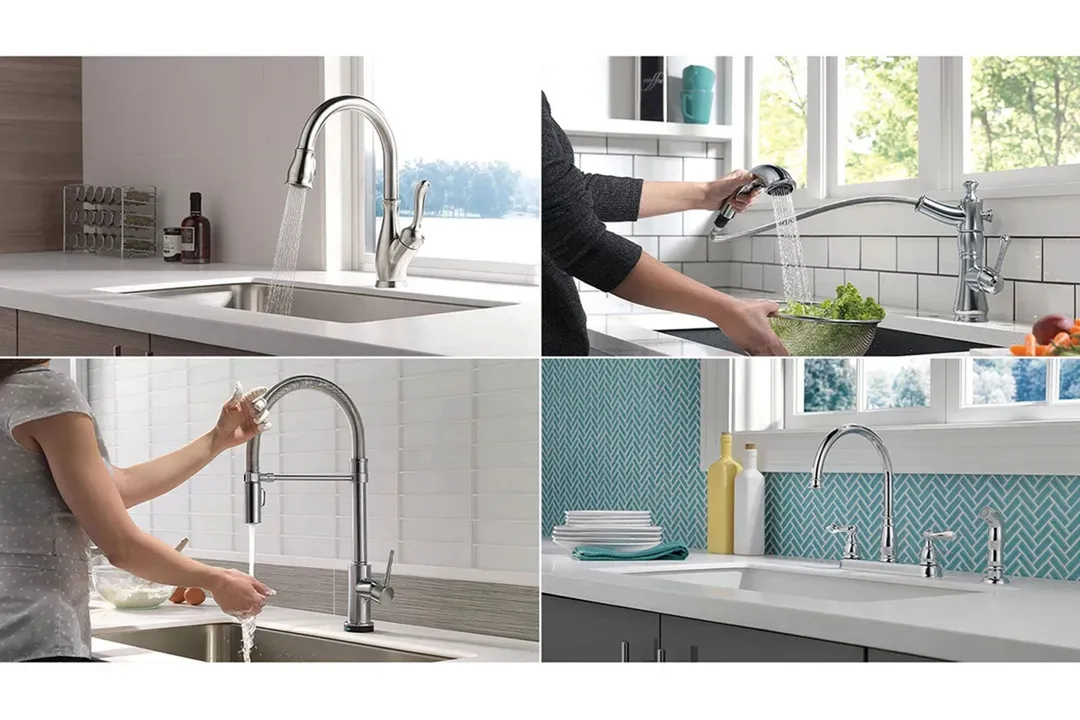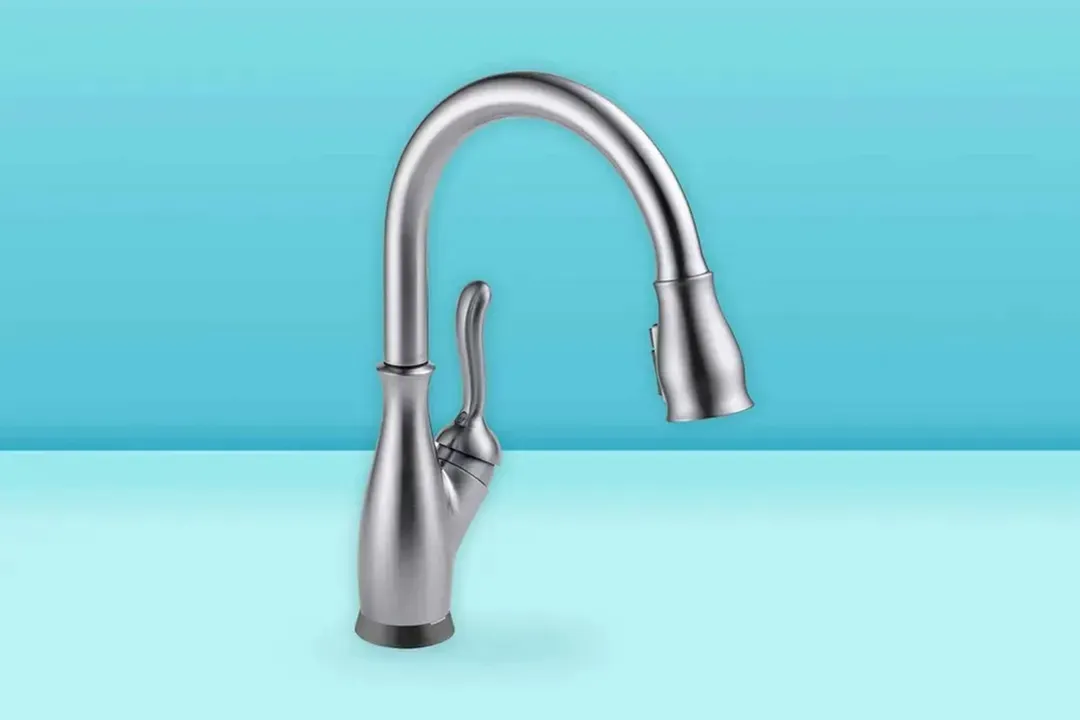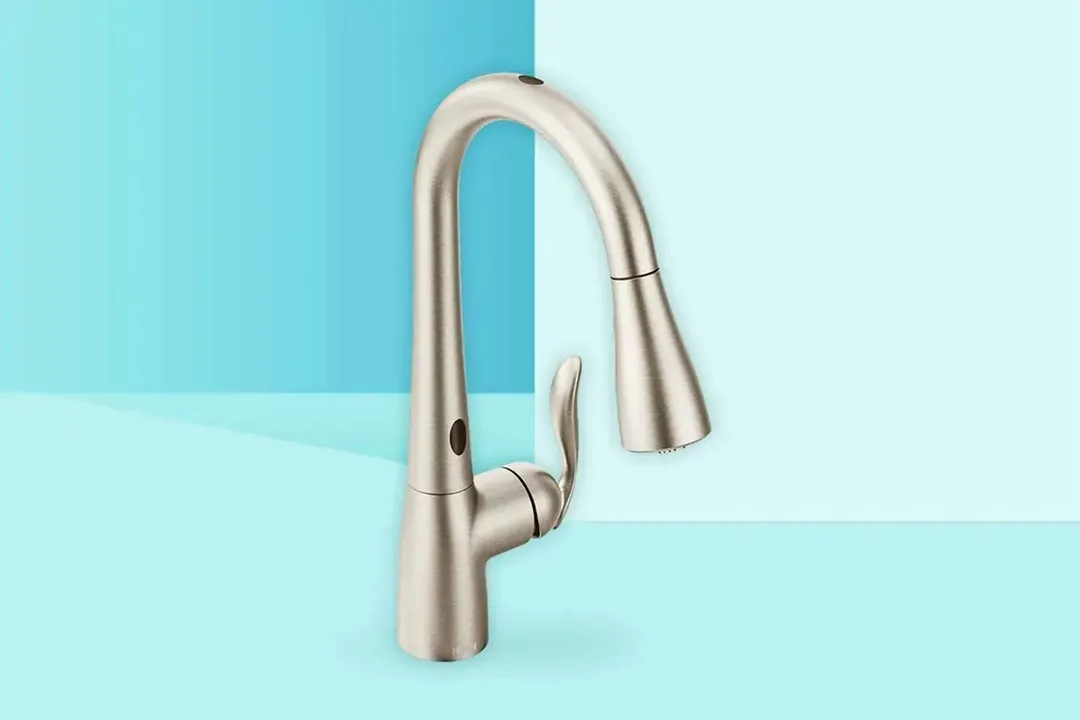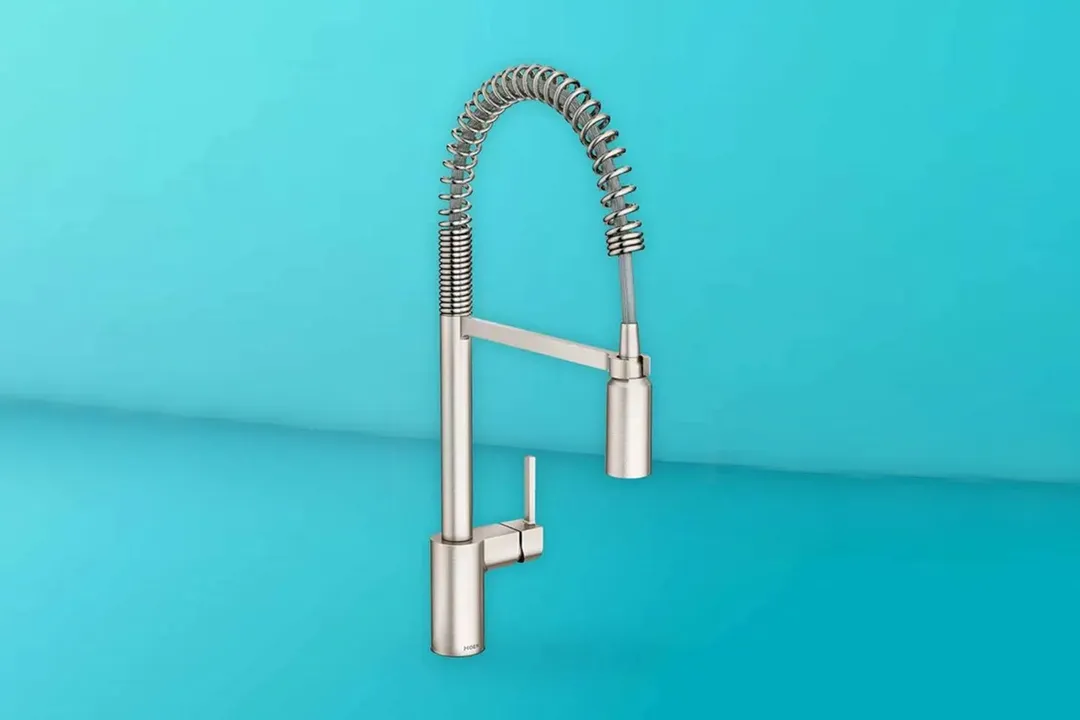Our recommendations are made independently through Research & Testing. We may receive commissions from purchases made via our links.
How to Choose the Perfect Kitchen Faucet
Making decisions on kitchen faucet is rarely easy and you’re gonna need some good information about certain aspects to come to the final judgement.
Be it a total makeover or just some minor twitches in the home, to a large portion of the populace, picking the best kitchen faucets is hardly ever a picnic in the park.
And it’s understandable as picking out bathroom or kitchen fixtures, in general, has to involve lots of careful thinking. Because they’re, you know, FIXED. The ideal circumstance is for them not to break, ever (or not too regularly at the very least).
In the vast jungle that is the kitchen faucet market, some guidance - directions/aspects for you to look into - can never be too far-stretched. And I’m pretty sure, if you end up here, there’s a good chance that you’re in need of some help. This post is intended especially for you. So enjoy!
Top-rated Kitchen Faucets – What They Should Look Like
Whatever type of faucet you’ve set your eyes on, there are a few criteria to keep in mind before picking a particular one for your kitchen.
Material
A faucet is something you and your family are using, and very likely, drinking from frequently in the long years to come. Make sure you choose a material that is not only safe but also durable.

- Metals (solid brass, bronze, etc.) have been the top choice to build the best kitchen faucets for many years. They have better heat tolerance and typically last for decades. While there are concerns over the leaking of lead from, for example, brass faucets, they’re still one of the best options for the home kitchen. However, they tend to belong to the higher end of the price spectrum.
- Plastic faucets are typically much cheaper. Unlike what is typically believed of them, plastic models can last for long decades with minimal wears and tears. These faucets, however, have a bad reputation for leaking synthetic fibers into the water. There are also concerns over the hormones-damaging nature of plastic, which makes them less preferable compared to metal faucets.
Design
I once made the mistake of buying a short, low faucet as I thought it would look nice on my small kitchen sink, which it did. But I ended up having a lot of little annoyance: there wasn’t enough room for some of the pots, I kept hitting the spout with my cookware, and so on.
After those incidents, I decided that a good kitchen faucet is, first and foremost, one with a design that serves its purposes. You should be able to wash your veggies and dishes, and slide your biggest pot underneath without difficulty. I highly recommend keeping this in mind when you shop for one.
In order to achieve that, the dimensions are the first thing to take into consideration. Make sure you know the overall counter vertical space and the spout height, especially if you have a narrow and shallow sink, or a low hanging cabinet over the sink. Make sure the faucet fits with the sink perfectly and leaves a considerable space between the spout and the sink so that you can do your washing with ease.
That is not to say you should ignore the visual features of a faucet. Apart from the dimensions, the style and finish can really make a difference. A faucet could augment and compliment the sink and other appliances in the kitchen, or it could stand out to mock your sense of aesthetics every time you enter the cooking area.
Utilities
Not that you should expect to find a thousand different utilities on a kitchen faucet, but sometimes a small innovation on that little spout can bring your kitchen experience to a whole new level.
What should you look for?
- Self-retracting head (on pull-out and pull-down faucets)
- Touchless or touch-control feature (seen on hands-free faucets, compulsory for those with a sanitary OCD)
- Multiple spray modes to save water
- Temperature indicating lights, especially if you have kids in the house
- 360-degree swivel spout for better washing access
- Spot-resist finish
Knowing the different types of kitchen faucets with their typical features and all the pros and cons may help big time!
Installation
Before getting one, check your sink and see if they’re compatible for installation. Depending on the sink, you may want to get a one, two, three, or four-hole faucet.
If you like a one-hole faucet on a multiple-hole sink/ counter, the biggest problem is to cover the other holes up. And to do that, make sure the faucet comes with an escutcheon plate. If it doesn’t, you can simply buy one.
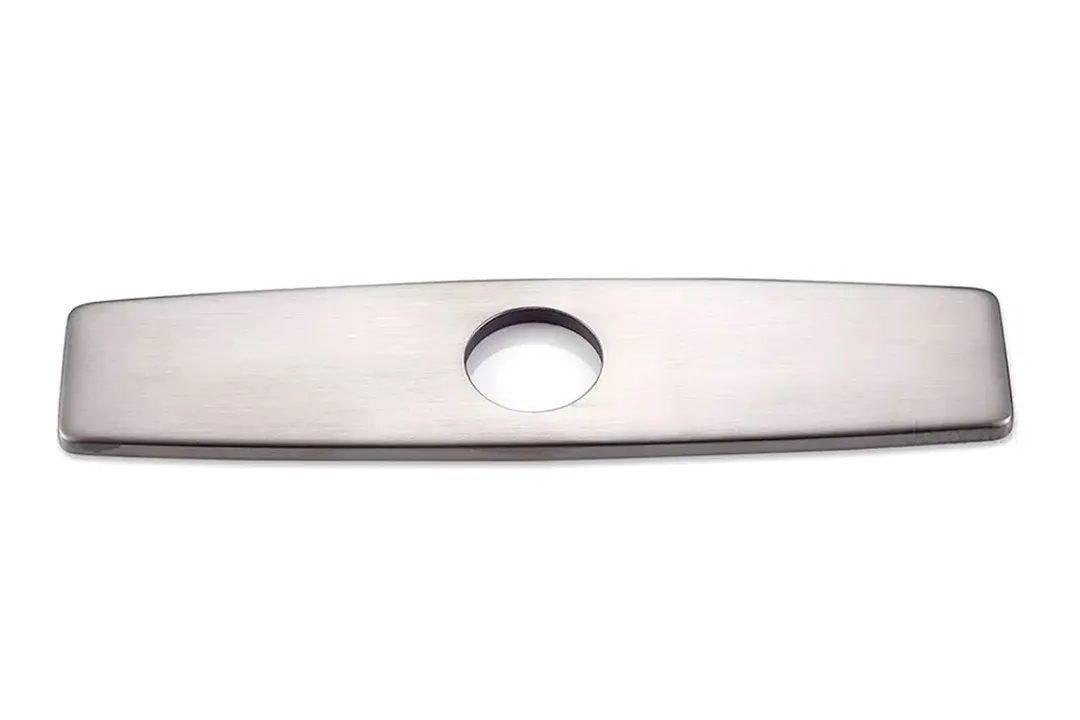
Warranty And Customer Service
You want a warranty as long as possible, for obvious reasons. If a product comes with a (limited) lifetime warranty, you know the manufacturer stands behind its quality.
Good customer service is also essential. That’s obvious for experienced consumers; but for the others, I have to state it here again because it’s one of the things that are usually overlooked.
Trust me, you’d love to receive some immediate help at certain times when there’s an issue.
Check customer reviews to see if the company is quick and responsive in case of a product defect or any other problems during installation. You can’t go for too long without a kitchen faucet – keep that in mind.
It’s also not too uncommon that you encounter a problem during installation, and need someone who knows their faucets to talk to. It’s nice to not always have to resort to plumpers when a solution is just a 3-minute call away.
Basic Types Of Kitchen Faucet
As your needs in your kitchen vary, faucet designers and manufacturers will build products with specific traits to meet those needs.
To elaborate, many people appreciate precision in temperature control, while others are more mindful about the reach of the spout and the sprayhead. Each type of kitchen faucet will excel in certain aspects and won’t so in others.
But they can be “perfect” as long as you know your own demands. So jot down a list, and take a look at this detailed read about 5 most common types of kitchen faucet to see if you can find “the one”.
What Are The Best Kitchen Faucet Brands?
Some of the most popular kitchen faucet brands include Delta, Moen, Kohler, Price Pfister, and Kraus. Each company has their own signature designs and technologies that make them an ideal choice for customers of a particular demographic group.
Most people choose to stick to one single product line for all of their kitchen faucets. It’s mostly for the sake of aesthetics and experience uniformity - you want the same feel and style throughout the kitchen, and expect ease of use every time you turn a faucet on.
Before making a long term commitment with a brand, take a look at this concise intro and comparison between popular companies.
Moen Vs Delta: A To-the-point Comparison
As the two leading brands on the market, Moen and Delta easily fall among the finalists when a homeowner picks a brand to commit to.
Many customers find themselves in a predicament at the final minute, as fixtures from Moen and Delta Faucet are renown for their quality and are built in direct competition with each other.
The rivalry is reflected by the fact that the two companies have distinct approaches to certain utility aspects through their own designs and technologies, which leads to noticeable differences in the user experience.
For a thorough, unbiased look, check this detailed Delta vs. Moen comparison by our reviewers.
How To Replace A Kitchen Faucet
Found something you like? Good! Now it's time to take the old one off and set that brand new baby up.
Now the safest bet would be sending for plumbers. Professionals will make sure that everything is perfect without you worrying much about it. But, the bill is NOT going to be easy on the pocketbook. That's why so many choose to perform the task themselves.
If you don't mind a bit of household maintenance work, you should definitely try installing the kitchen faucet yourself. It's not that complicated of a process. It won't take too long and it's going to spare you some cash.
How To Find Your Delta Faucet Model Number
As one of the leading brands for kitchen faucets, Delta offers a wide variety of products. As a result, customers have more choices to consider, which is great and all, but it also means if we need to look for specific info of a unit, especially when it needs repair or upgrade, there is a pile of more than 1500 models to dig through.
Luckily, Delta Faucet tackles said issue head-on with a troubleshooting wizard on their website, allowing quick access to products' data through a very explicit procedure. Here's a step-by-step guide on how to use the tool to find Delta faucets' model number, manuals, etc.
Frequently Asked Questions
What is a compression faucet?
Compression faucet is the oldest type of faucet to exist. The water flow is controlled by the obstruction causing by compression valves (the handles). Unlike disc or ball valve faucets, compression valve faucets are comparatively not as flexible and are more prone to leaks.
How do I remove the aerator from my faucet?
It depends on the spout design of your faucet that you can use different tools to remove the aerator. Usually, with old model faucets (usually fixed spout), the aerator housing can be loosened with a pair of pliers and removed by hand.
With more recent models, a specific tool called “aerator key” is used instead. You can purchase online or in local stores. Additionally, some companies include aerator keys in their product package.
Why do you need an aerator on a faucet? + How does an aerator on a faucet work?
Aerators are designed to split the water stream up and mix air in as to reduce the initial pressure and create evenly pressured stream. Doing so results in less splashing and more efficiency in volume/energy control.
About your tip
Luna Regina is an accomplished writer and author who dedicates her career to empowering home cooks and making cooking effortless for everyone. She is the founder of HealthyKitchen101.com and HealthyRecipes101.com, where she works with her team to develop easy, nutritious recipes and help aspiring cooks choose the right kitchen appliances.



